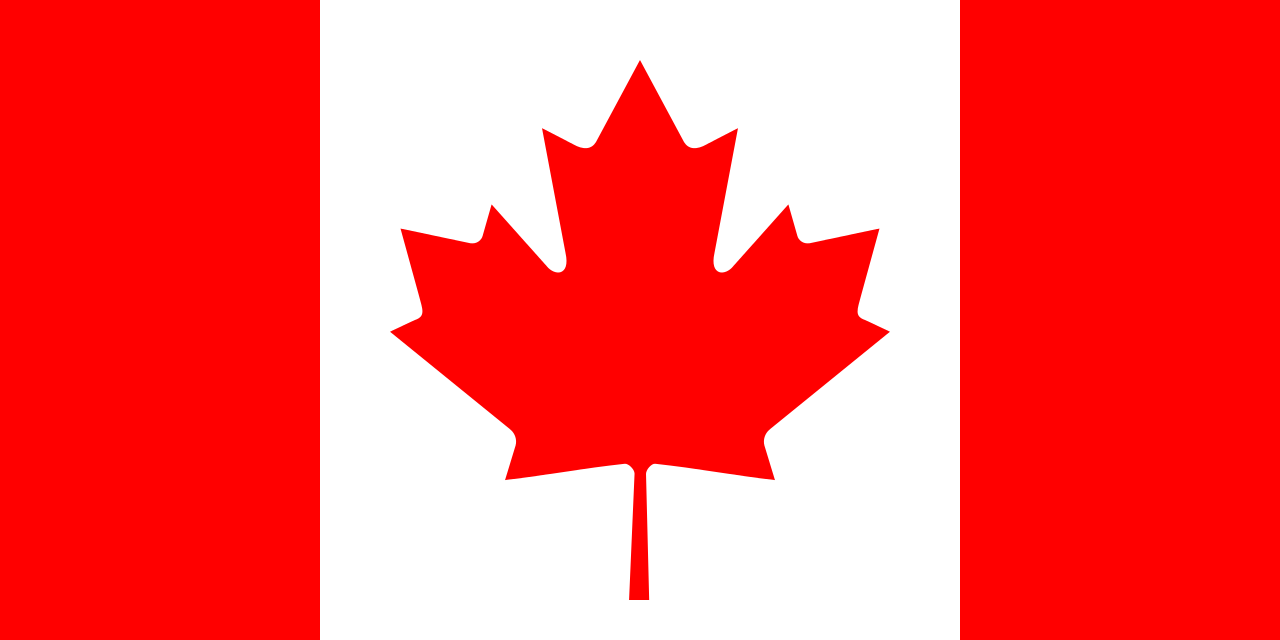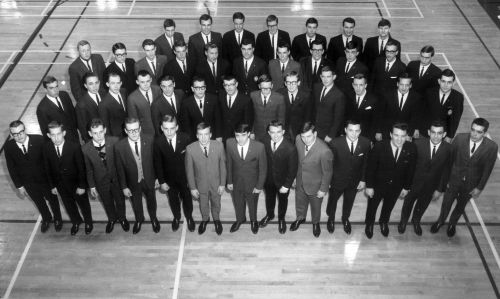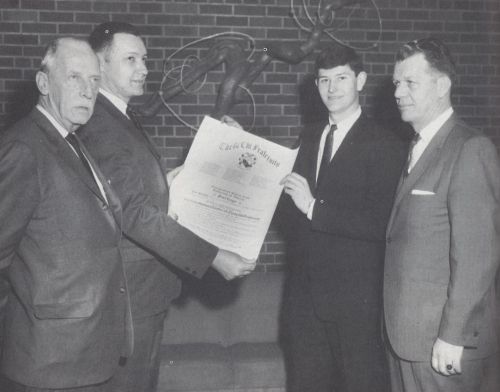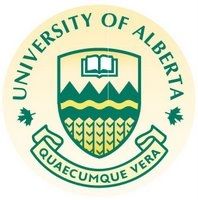
Today marks the 50th Anniversary of Theta Chi as an International Fraternity. Our very first chapter outside of the United States was installed in our neighbor to the north. On February 20, 1965, Zeta Gamma Chapter was installed at the University of Alberta in Edmonton, Alberta in the Dominion of Canada.
In January 1963, Theta Chi's then-Executive Director George Chapman received messages from the University of Alberta requesting that Theta Chi consider a potential opportunity to expand. After a bold presentation to the Alberta IFC by National Vice President Mark McColm (underlined and bold in article below), Theta Chi was selected to expand on campus and later that year, Executive Assistance J.C. Byrd was dispatched to begin recruiting members.
Coincidentally, Don Wismer, an initiate from Beta Chapter at MIT, transferred to the University of Alberta. Upon learning that Theta Chi was attempting to form a colony, he enthusiastically contacted and assisted J.C. Byrd with the recruitment of interested Alberta students. When Byrd left campus, a group of 22 men had joined the Colony. After two years of continued growth and influence from Brother Wismer, the names of 39 men appeared on Zeta Gamma’s Charter – and they pledged an additional 16 men that spring.


Zeta Gamma/Alberta's original colony members.


Zeta Gamma receives Charter on February 20, 1965 (l-r): Executive Director George Chapman, National President Howard Alter, Beta/MIT transfer brother: Donald Wismer, and National Vice President Mark McColm. McColm had traveled to Alberta at the request of George Chapman in February 1963 to meet with Alberta administrative officials and the IFC.
Bringing Theta Chi to a new country was no easy task. It took strong leadership on the part of George Chapman, bold language from National Vice President Mark McColm to sway the IFC, superior recruiting from J.C. Byrd, and the willingness of Don Wismer, a transfer member, to remain true to his oath to bring Theta Chi to a new campus. Zeta Gamma was also supported by a number of volunteers and from it's closest neighboring chapters: Alpha Omicron/Washington State, Beta Epsilon/Montana, and Epsilon Kappa/Idaho (more than 750 miles away!)
We salute the brothers that brought Freeman and Chase's idea of an Assisting Hand across borders, thus demonstrating the true timelessness of their original vision. We celebrate Zeta Gamma's 50 years of continued existence at the University of Alberta and wish them many more years of success. In recognition of Zeta Gamma's place in Theta Chi Fraternity's history, the Grand Chapter is making plans to hold their next meeting in the Province of Alberta in June 2015.
While we celebrate our members of Zeta Gamma, let us also take the opportunity to recognize all of our international brothers. Countless brothers from other nations have joined Theta Chi over the decades (even prior to Zeta Gamma's installation) and continue to remain Theta Chis for Life even after leaving their Alma Mater and returning to their country of origin. Whether attending college in America, or simply affiliating during their study-abroad experience, or if they are men who have been initiated as alumnus members - regardless of language or country - all have been united by the Ritual and Creed of Theta Chi Fraternity.
We also have American brothers who have relocated out of the country due to family or career obligations. We truly have a brotherhood whose members reside throughout the world. Theta Chi truly is an international organization.
As a commitment to Zeta Gamma Chapter, to all of our international brothers, and to perpetuate its ideals, Theta Chi continues to seek out opportunities to expand outside of the United States. If you are aware of individuals that are able to form the foundation for a strong chapter at an institution outside of the United States, please contact Director of Recruitment and Expansion Justin Jones at 317-848-1856 or at jjones@thetachi.org.
Congratulations to the alumni and undergraduate brothers of Zeta Gamma Chapter on 50 continuous years at the University of Alberta!
You can send personal notes of Congratulations to Zeta Gamma Chapter President Mark McClintock by clicking here. You can follow Zeta Gamma Chapter on their Facebook Page by clicking here. On their page, you will also find an event link for their upcoming anniversary celebration. You can also follow Zeta Gamma Chapter on Twitter: @ThetaChiCanada
In honor of their 50th Anniversary, we have included a PDF of Zeta Gamma's original Petition for Installation and have included the original article about Zeta Gamma Chapter's Installation from the Spring 1965 issue of The Rattle.
Click Here to view a PDF copy of Zeta Gamma's original Petition for Installation.
(Text version of original Zeta Gamma Article from Spring 1965:)
Zeta Gamma -the first chapter installed in the Dominion of Canada
With the thermometer registering a chilly 10 degrees below zero, Zeta Gamma chapter of Theta Chi Fraternity was installed as the first chapter in the Dominion of Canada on February 20, 1965 at the University of Alberta in Edmonton, Alberta. This installation marks an important milestone in the long and illustrious history of our fraternity as Theta Chi is now an international fraternity.
Zeta Gamma becomes our 131st active chapter and also our most northern chapter as Edmonton is located slightly north of the 53rd parallel. The most northern part of the United States is located on the 47th parallel.
The installation committee was composed of Howard R. Alter Jr., Theta Chi’s first international president; Mark E. McColm, international Vice-President; George W. Chapman, Executive Director; J.C. Byrd, Executive Assistant; George Jensen, Regional Counselor; Louis Roebke, Alpha Rho, Seattle, Washington; J.R. Bozman, Alpha Tau, Calgary, Alberta; Dr. Herbert East Smith, Rho, Edmonton, Alberta; William G Evans, Lambda, Edmonton Alberta, and the following undergraduate numbers John P Bergerson, Garry M. Kanz, Larry M. Kanz, Willard E. Schwartz, Austin B. Mason, Edwin P. Russell and Dean F. O’Neil from the University of Montana; Larry L. Hook, Michael L. Canady, Calvin S. Smith, John R. Teague, and David R. Cox from the University of Idaho; William L. Halpin and Brandt W. Koller from Washington State University.
The undergraduate members almost did not make it to Edmonton as they were caught in a blizzard near Calgary. Fortunately they made it without any trouble on the 750-mile trip to Edmonton.
Zeta Gamma’s history goes back to January 1963 when the Executive Office received correspondence from the University of Alberta asking if Theta Chi was interested in establishing a colony at the University. Several other fraternities were also asked and those that were interested were asked to send a representative to the campus. Theta Chi was interested and in February 1963, Mark McColm, National Secretary, flew to Edmonton from Seattle Washington and met with administrative and Interfraternity Council officials. Mr. McColm concluded the meeting with the following statement: "I have a feeling you would like to expand your fraternity system, but carefully, so that you will not get an organization that will give any of your present groups serious competition. If that is the case, I suggest you invite one of the other organizations you are considering. If Theta Chi comes in, we will do so right and I must assure you that we will give you more than competition in a short time." A few weeks Theta Chi was advised that it had been selected to colonize at the University of Alberta.
The actual colonization was begun by September 23, 1963 when J.C. Byrd, Executive Assistant, arrived in Edmonton. Articles were placed in the student paper The Gateway and posters were placed in prominent locations on the campus stating that Theta Chi was colonizing and that those interested should contact Mr. Bird. One of the first people to contact J.C. was Donald Wismer, a Theta Chi from Beta Chapter at Massachusetts Institute of Technology who had transferred to Alberta as his parents lived in Edmonton. Don was very enthusiastic and together he and J. C. began to interview prospective members. By November 23, 1963 when J.C. left Edmonton, 22 men had been pledged to the colony.
On February 1, 1964 the colony was officially installed when 12 members from the University of Montana initiated 19 men into Theta Chi Fraternity.
Rushing continued and eight more men were pledge to the colony.
The colony became quite active on campus, winning the ice sculpture in February 1964 and entering intramural competition. Don Wismer was also elected IFC Vice-President at this time.
The summer of 1964 was spent in working to secure housing facilities and organizing a fall rush program. Both programs are highly successful.
A house was secured from the university and 23 men were pledge to the colony at the conclusion of rush in October 1964. The membership as of February 20, 1965 included 39 actives and 16 pledges which is indicative of the outstanding progress made by the colony. The future appears to be very bright for Zeta Gamma Chapter.
The charter members of Zeta Gamma are as follows: Christopher L.B. Canny, John R. Bayer, Alan Richard Cole, James Demas, Alan R. Dick, David H. Field, William H. Ford, Roger M. Hall Jr., Wayne R. Ingram, Frederick L. James, Ernest F. Kasawal, Gary W. Loby, Duncan R. McAmmond, Douglas L. McAthey, David M. McFadden, David B. McFarlane, John G. McFetridge, William D. McLeod, Donald A. McMillan, Philip J. Millman, Richard S. Mooney, Russell W. Moysa, Richard D. Murray, Ted A. Paszek, John F. Pavelich, Garry W. Powell, Brian S. Purdy, James M. Quilley, Dwight A. Renneburg, Patrick M. Reynolds, Harvey G. Romeike, Robert W. Senkow, William J. Shachnowich, Gordon K. Sherwin, Richard S. Scott, Donnie O. Syrnyks, Donald D. Taylor, David G. Walker, and Donald Wismer.
History of the University of Alberta
The University of Alberta, now 57 years old, by comparison with universities in the world over, is still very young as is the community that gave it birth --Edmonton.
It all began in 1906 when the first legislature of the province of Alberta at its first session passed an act authorizing the establishment of a university. In the following year Premier Rutherford persuaded Dr. Henry Marshall, a distinguished McGill graduate and lecturer in physics and mathematics, to accept the post of president. In September 1908, classes began in the Faculty of Arts and Science with a staff of five men and a student enrollment of 45.
The campus has grown through two World Wars and the dismal thirties to a student enrollment now of over 11,000 and a professional teaching staff of over 130. Most every faculty is represented and the addition of new buildings continues every year. The school of Graduate Studies is steadily increasing in prestige and there are a large number of foreign students in attendance.
Student self-government is one of the most independent of any university. Extracurricular affairs are run by the students themselves through their own committees. A proposed new Student Union Building is to be one of the most modern and functional in North America upon its completion in 1968.
Future plans call for even greater growth at the University of Alberta. The proposed enrollment by 1975 is 15,000 with plans for large expansion of facilities at both Edmonton and Calgary campuses.





